Best Fujikura driver shafts 2025
Last updated:
Which Fujikura driver shaft is right for your golf game?
We’ve taken the best part of a year to get to know Fujikura. We’ve learned everything about their products and taken the time to understand the technology that sets their shafts apart. We’ve visited their global HQ in Carlsbad, California and tested their products with TG Test Pro Neil Wain.
Whatever big stick you’re buying, whether it’s one of the best draw drivers, most forgiving drivers, or longest drivers, we would always recommend a full fitting to ensure you’re getting top performance out of your new club.
A key part of that will be finding the perfect premium driver shaft, so let’s delve into Fujikura’s offerings and find out how they can help your game.
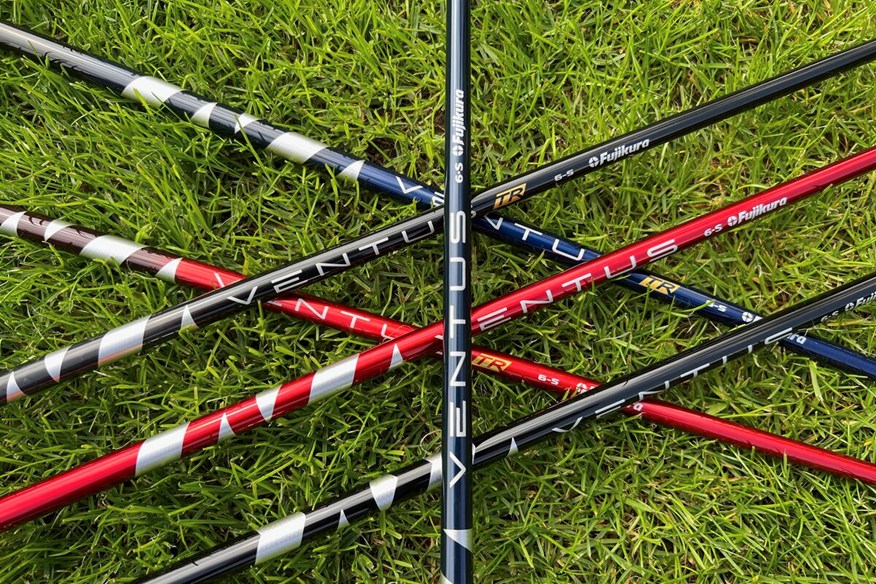
What are premium after-market shafts?
If you’ve not visited an independent club fitter or clubmaker then you’ve probably never experienced premium after-market shafts. Essentially these are shafts designed without cost restrictions, in the same way the super-premium irons that some brands create offer ‘ultimate performance’. Such clubs come with higher prices, as extra costs are incurred using the very best materials. There are also additional costs attached to tightening tolerances to create a more consistent, higher-quality product.
When it comes to after-market shafts, Fujikura use the highest-grade carbon fiber available to create models for the game’s best tour players. Every shaft contains more premium carbon fiber (and less glue), than lower-priced alternatives. But the extra cost means these shafts can never be a stock option for the likes of TaylorMade, Callaway, or Ping. If they were, drivers would be substantially more expensive than they already are.
Instead, when creating shafts for the best low spin drivers, for example, they produce slightly lower spec OEM models to ensure the desired price is hit and the maximum number of drivers are sold.
Watch: See inside the lab where Fujikura design shafts for the worlds best players
Take inspiration from the tour
We would never say you should play the same products used on tour because it would be irresponsible. However, not a single tour pro plays the stock driver shafts you and I are offered at retail.
Most brands will offer three or four high, mid and low launch ‘stock options’ to cater for different speeds and deliveries. But they never make it near a tour van or tournament. That’s because tour pros choose premium after-market shafts to help them gain the maximum performance advantage.

What are the benefits of premium after-market driver shafts?
Stability, stability, stability. Fujikura use super premium materials for their very best after-market shafts, as their engineers know they offer additional stability. And they’re effective no matter how much speed you generate.
Fujikura admit if you’re a golfer who hits every drive from the center of the face, there’s little to be gained from premium after-market shafts. Apart from a slightly better energy transfer at impact. However, when shots don’t impact the center of the face (a regular occurrence for club golfers), there are significant performance differences.
The extra stability of premium after-market shafts holds the face squarer and stops it from deflecting as much at impact, effectively giving your driver an MOI boost on off-center hits.
How much of an MOI boost? With so many variables at play, Fujikura are understandably reluctant to offer up specific numbers, but between 10–20% would be hugely significant when it comes to dispersion improvements.
To find out what benefits a premium driver shaft could have for you, we tested the latest Fujikura Ventus and Ventus TR models against each other and a standard stock driver shaft.
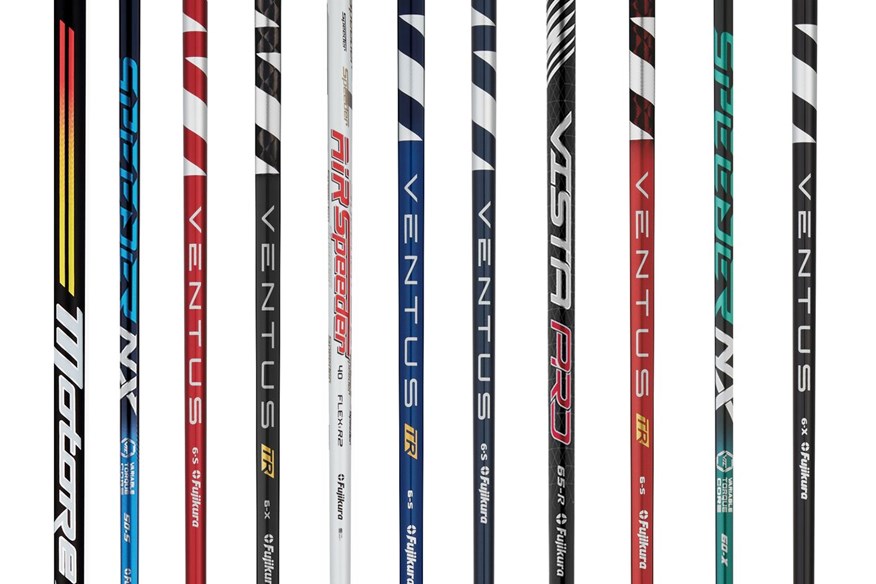
Which Fujikura driver shaft suits you?
Fujikura Ventus $350
The Ventus came out in 2019, it was the first shaft to feature the brands VeloCore technology inside. VeloCore is a structure that means the brands combination of Pitch 70 Ton and 40 Ton carbon fiber run along the whole length of the shaft. No other shaft in the brands line-up bar the Ventus TR benefits from this structure. The set-up brings exceptional levels of stability to golf shafts. The Ventus has an unusual profile as there’s an ultra-stiff tip section, which allows the company to claim an MOI increase on off-centre hits, along with a stiff mid-section and relatively soft handle section.
Fans of Ventus (who can range from high to average speed players) talk about the shaft having a lovely smooth, and even lively feel during the transition between backswing and downswing. Ventus brings that feel together and blends it with huge amounts of stability, hence why it’s been one of the hottest shafts on the market since launching in 2019.
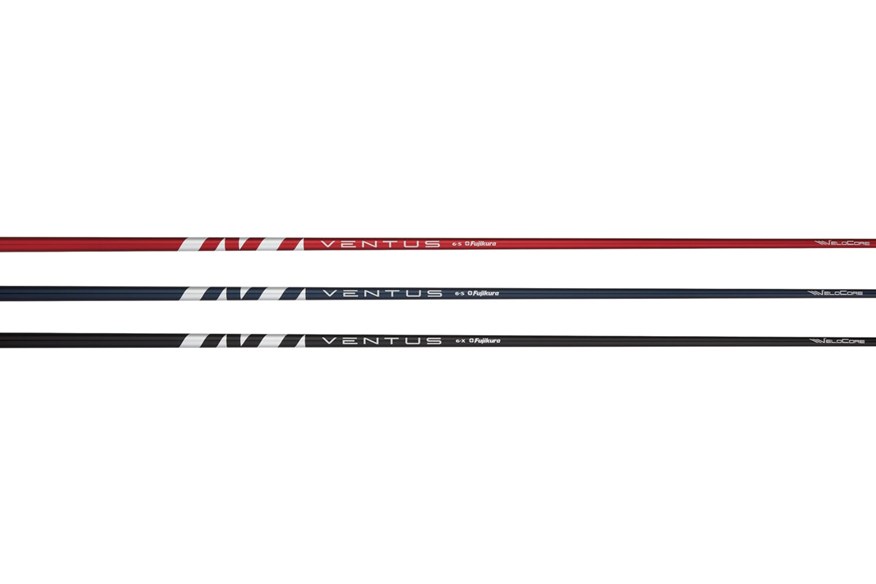
Thanks to the popularity of the original Ventus Blue the company then developed the slightly higher launch/mid spin Ventus Red, and low launch/low spin Ventus Black. It’s really important to understand though Ventus Red is higher launch and spin relative to the Ventus Blue and Black models. It is not the brands highest launch and spin shaft, the Air Speeder takes that title. So long as there’s a VeloCore logo on the tip you know you’re buying into the companies premium stability structure.
Three models mean Ventus can be very player specific and cater to how golfers deliver the club at impact, how they move in transition and how much speed they generate. They also give a feel preference too. Expect each shaft to offer the same consistent stability results not found in lower spec shaft models.
Fujikura Ventus TR $350
Ventus has been a huge success, but the one piece of feedback the brand get most often from high-speed players is how the model could feel a little soft in the handle section. So, they went back to their enso lab and hooked up several analytic sessions to specifically look at how the handle section of a shaft performs at several thousands of frames per second.
After spotting a little bit of twist and bend in the Ventus they decided to address the issue, with a new model. They didn’t do it by adding a bunch of material and increasing weight, but instead through a new Spread Tow carbon fiber material which recently appeared on the scene. Essentially by basket weaving strands of this material around the handle section, the shaft could take a lot of stress and load in different directions without moving at all. The Ventus TR was born.
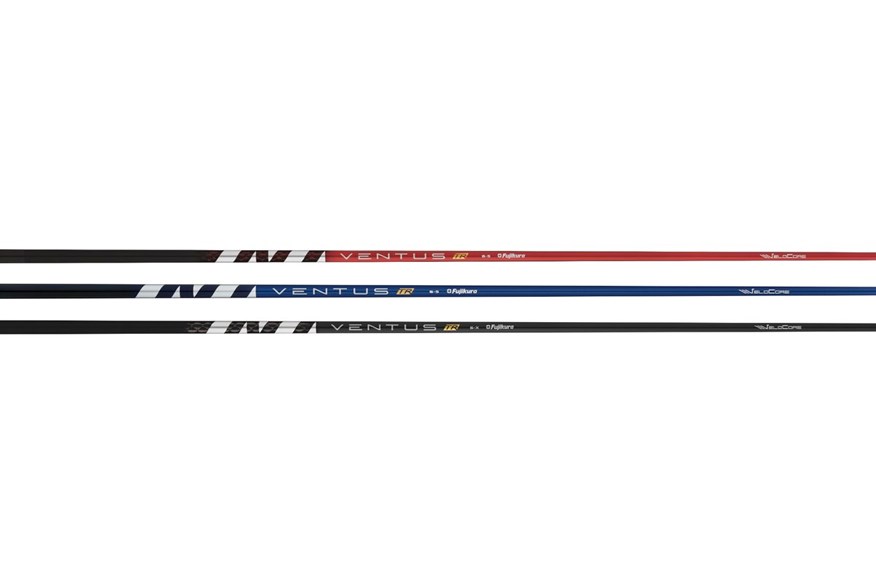
The additional Spread Tow material in the TR is very lightweight so you get lots of tension and strength without upping mass. It bumps down torque high in the shaft and doesn’t throw the balance off.
See the three Ventus TR models sitting between the standard Ventus. Where TR Red is a little stiffer than the standard Red but not quite a Ventus Blue. And TR Blue is a little stiffer than the standard Ventus Blue, but not quite a Black, and you’ll be thinking exactly along the right lines.
The family of six Ventus and Ventus TR models all live independently of each other. Red is the softest highest launching set-up where TR Black is the stiffest lowest launching profile. Between them it’s possible to dial in ball flight, feel and player preference which is exactly what proper custom fitting is all about.
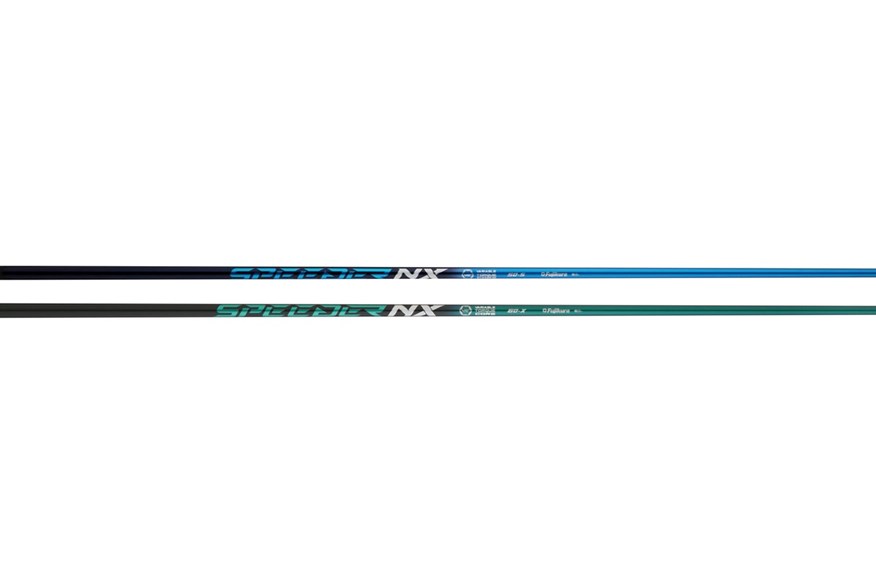
Fujikura Speeder NX $400
The Speeder NX Blue launched in 2022, and it replaced the hugely popular speeder Evolution series. The model features a new Variable Torque Core which allows Fujikura’s engineers to control and alter torque in multiple sections of the shaft.
The torque within each section (tip, mid and handle areas) can be altered independently, and the Speeder NX is the first shaft the brand can do this with. Fujikura say it allows them to create very specific ball flight characteristics, and different feels. The Speder NX Blue has a stiff tip and handle section, where the NX Green is stiffened in the mid-section to deliver lower launch and spin.
Expect the Speeder NX Blue to be a little higher launching than a Ventus Blue, and because the shaft is built around a Variable Torque concept it doesn’t have the same VeloCre technology as the Ventus models. To truly understand which premium model best suits you, it’s imperative to try both with a skilled and reputable fitter.
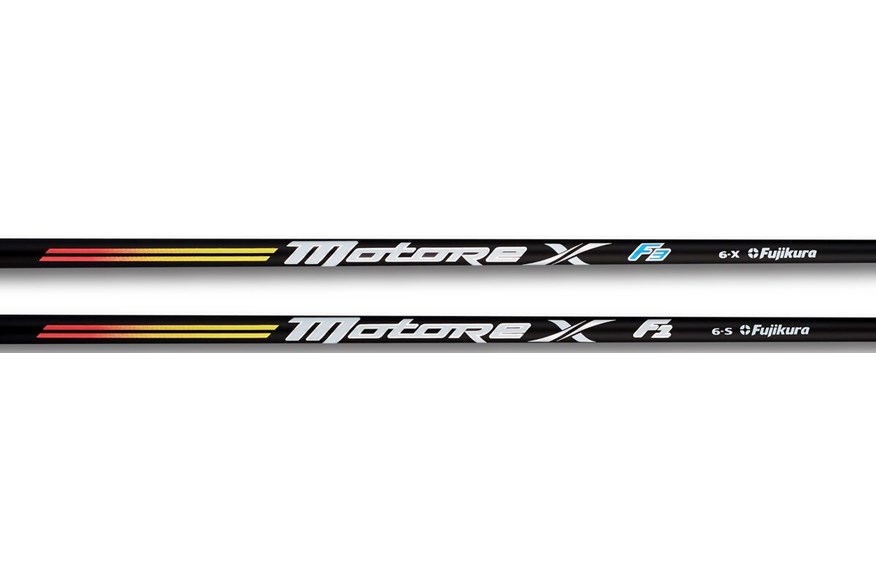
Motore X $225
Fujikura are acutely aware many golfers will not stretch to paying $300+ for a driver shaft, so they also make good, solid performing shaft options at slightly lower prices too. These models fulfil their ‘better’ platform (where OEM models fit within their ‘good’ platform).
The Motore X comes in both a lower (F1), and mid – high launch (F3) version. Expect less tip stability than a Ventus as there’s no VeloCore structure, and there’s no premium Pitch 70 Ton or Spread Tow carbon fiber inside either. That absolutely does not mean the Motore X can’t do a decent job for you, it just means you are not be buying into the ultimate best performance materials available, which of course not everyone wants.
Fujikura say the Motore X has an accelerated taper design which helps transfer more energy to the ball than other models at this this price point.
Expect the F1 model to be a better fit for faster more aggressive swing types as a stiffened tip and mid-section create a powerful more penetrating low to mid trajectory. Where the F3 is typically a better fit for smoother more moderate swing speeds. Its slightly softer butt section produces a mid to high ball flight which is great for maximising carry distance at more average speeds.
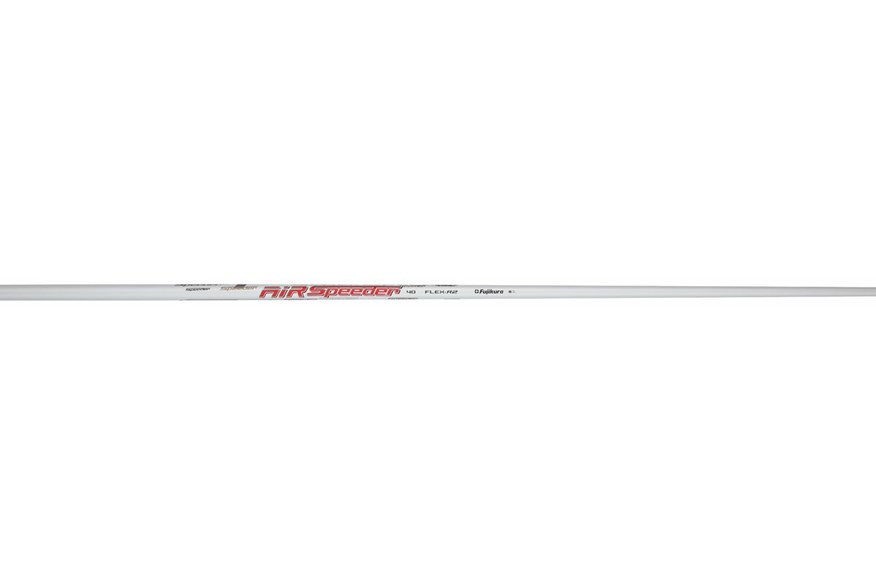
Air Speeder $300
The Air Speeder is Fujikura’s ultra-lightweight shaft option, it’s the model that’s geared to rinsing every last drop of juice from moderate swing speeds. Expect the model to be the highest launching shaft within the Fujikura range (and significantly higher than a Ventus Red), which is a key performance benefit in maximising carry distance at moderate speeds.
Interestingly the after-market Air Speeder contains some of the same Pitch 70 Ton carbon fiber found in the brands Ventus models, which is why the shaft remains stable at reduced weights and watered-down flexes. Expect a lightweight feel, and easy to load shaft for plyers that don’t generate lots of speed. Fujikura say you should also feel an extra kick and pop into the back of the ball.
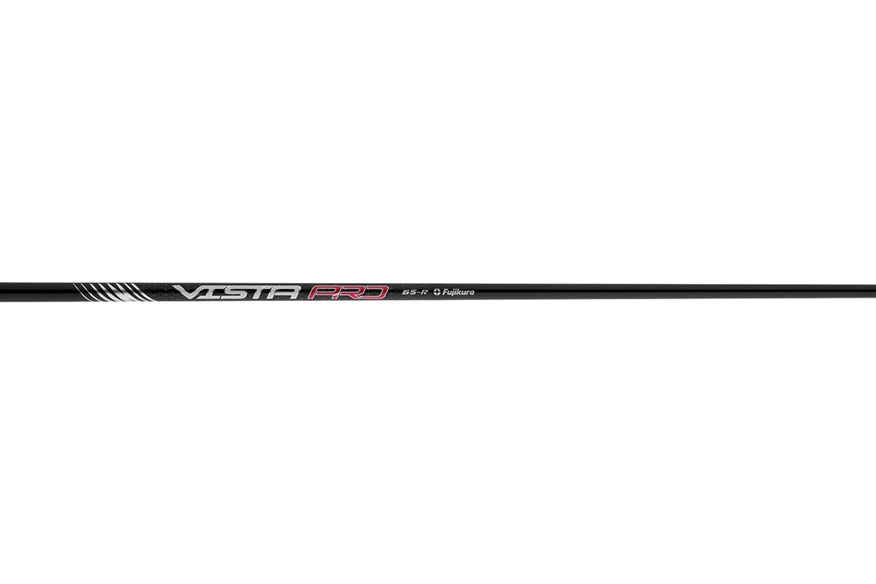
Vista Pro $125
The Vista Pro is Fujikura’s entry level product and it’s primarily available through the brands network of custom fitters. Expect the lighter weight Vista Pro 45 and 55 models to generate a higher launch with more spin, where the heavier models produce a mid-high shot trajectory with slightly reduced moderate spin.
The Vista Pro uses some of the same 40 Ton material found in the Ventus and Ventus TR but be under no illusion it does not have the brands VeloCore structure inside. A good option for price conscious golfers wanting to play Fujikura shafts, the Vista Pro sits within the brands ‘good’ category like most of the shafts the brand produce for OEM’s.
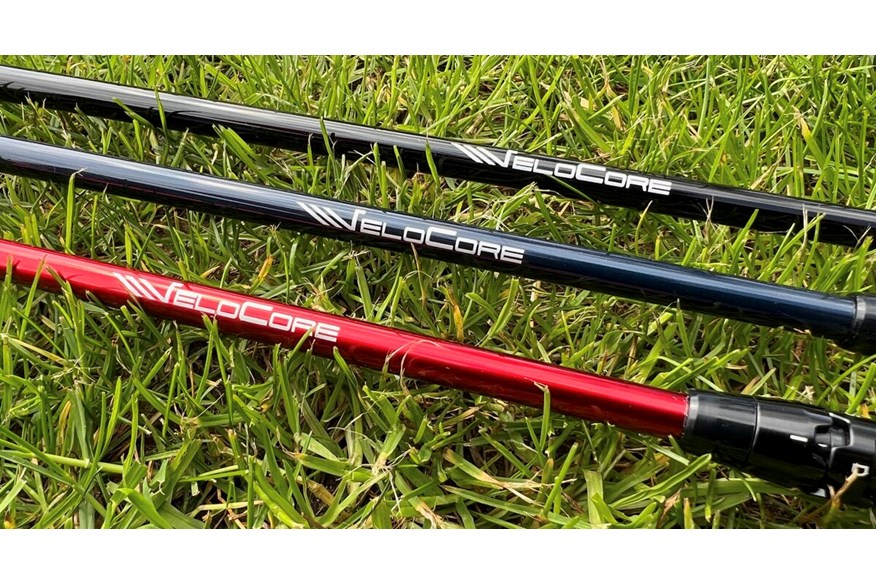
The test: Fujikura Ventus and Ventus TR vs stock driver shafts
Fujikura sent us their Ventus and Ventus TR Red, Blue, and Black shafts, the brand’s most popular high, mid and low-launching models, respectively. These are the shafts you’ll find in the bags of tons of tour players, including Rory McIlroy, Scottie Scheffler and defending Open Champ Cameron Smith. We asked TG test pro Neil Wain to hit 10 shots with each, so we could replicate how many times a golfer would typically hit their driver in a single round.
Our Foresight GC Quad launch monitor recorded in-depth data from every shot to allow us to accurately assess how each shaft performed, make comparisons and decipher any dispersion improvement.
We used a 10.5° loft Callaway Paradym driver head (Fujikura’s shafts came with the brand’s hosel adaptor) and a stock Mitsubishi Kai Li White driver shaft. That’s the model most suited to our test pro in Callaway’s current driver shaft line-up.
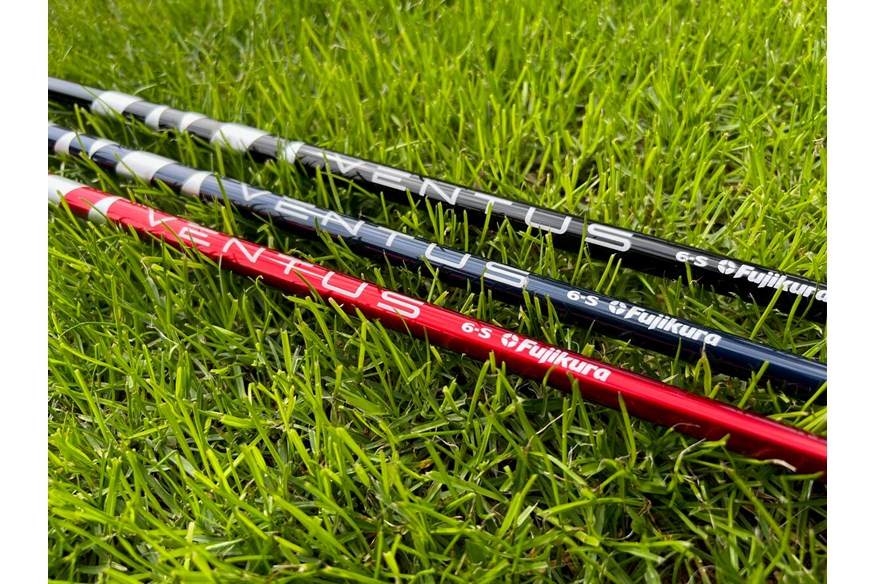
The conclusion: Fujikura Ventus and Ventus TR driver shafts
Regular readers know we do plenty of equipment testing here at Today’s Golfer (find out how we test), and the data doesn’t always stack up in the expected way. However, that wasn’t the case here, where our test results utterly support Fujikura’s thinking.
The Callaway Paradym driver with its stock Kai Li White shaft produced a shot area of 1,100 sq yds. Where the average of all six Fujikura Ventus and Ventus TR models was 29.1% tighter at 779.6 sq yds.
Tests that feature multiple models always make some of the options look like poor choices. In this case it was the Black and Black TR, but these are simply the models least suited to our test pro.
Realistically, Neil would play the mid-launch mid-spin Ventus Blue shaft, which gave a 26.9% tighter shot area (than the Callaway Paradym’s stock Mitsubishi Kai Li White shaft) to further prove Fujikura’s claims of increased MOI performance along with a tighter dispersion window. These are results we thought would be hard to unequivocally prove at the outset.
With just a four-yard carry distance gap between all seven driver shaft models, our test isn’t suggesting that paying more for a premium driver shaft will help you hit shots further. Optimizing your choice of driver shaft from any brand’s stock options will involve maximizing carry distance.
However, by choosing a stock shaft you won’t get the additional off-center hit forgiveness and maximum MOI performance set-up we’ve seen within this test. Of course, you have to balance the performance benefits with the cost – after-market shafts can cost $300 or more.
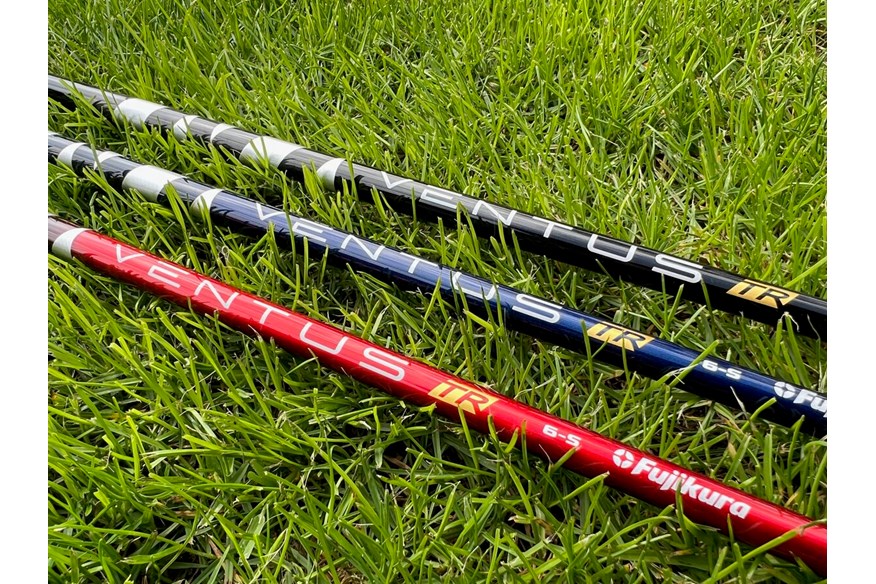
Who are premium driver shafts for?
After-market shafts are for all golfers in search of ultimate performance. There are improved off-center hit benefits to be had from premium after-market shafts and gains to be had no matter what your speed.
Should I buy a premium driver shaft?
If I were spending my own money and could afford it, then I’d buy a premium driver shaft model because the performance benefits are clear.
I wouldn’t rush the decision and would make the effort to visit a skilled custom fitter, with the aim of finding a shaft that gives me the feel and flight I love.
And while it is a hefty financial outlay, I would keep the same shaft year after year, making it the constant in my game, just as the world’s best players do. That way I would never need to question if my driver was costing me accuracy and dispersion again.
The data: Fujikura Ventus, Ventus TR Red, Blue, Black driver shafts
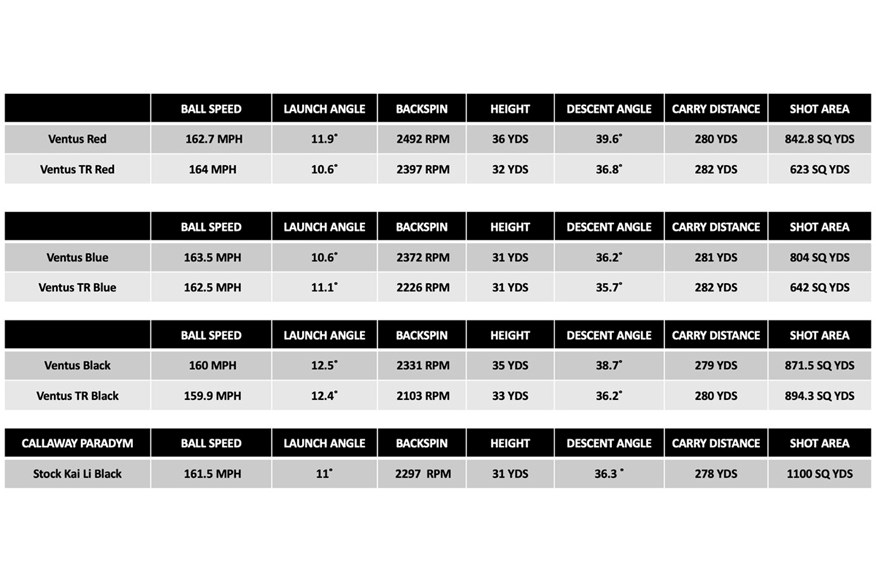
Fujikura Ventus Red and Ventus Red TR driver shafts
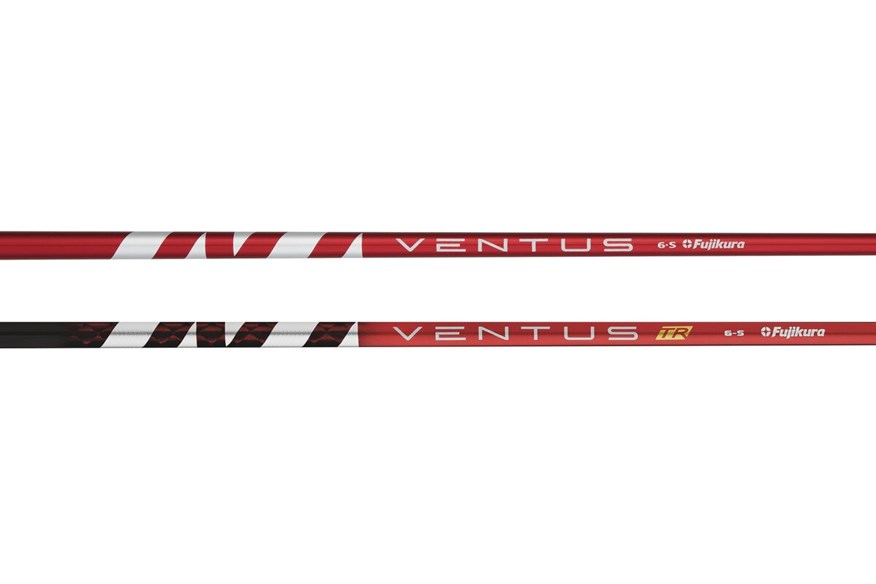
Fujikura Ventus Red
RRP: $399
Weight: from 59 – 94g | Torque: 3.9 – 3.2° | Performance: Mid – High Launch with Mid Spin
Fujikura Ventus Red TR
RRP: $399
Weight: 59 – 89.5g | Torque: 3.7 – 2.7° | Performance: Mid – High Launch with Mid – Low Spin
Today’s Golfer test verdict: The Fujikura Ventus Red is the brand’s higher launch option. Our test data shows it flew shots five yards higher than the Ventus Blue which gave a lovely powerful, hanging ball flight. Typically, this model will suit golfers who benefit from hitting shots higher. It’s also likely to be the best option for average-speed players, looking to maximize carry distance, as it will keep shots in the air for longer.
See the Ventus Red TR as sitting on the fence between the Ventus Red and Ventus Blue (so a Mid-High launch option) and you’re on exactly the right lines.
If the Ventus Red seems a good option, try the Ventus Red TR too. The TR has a 10% stiffer mid/handle section and gives a stronger, harsher impact feel, but it’s unlikely to feel great in the hands of average-speed players. Both the Red and Red TR are made from the same premium materials as the rest of the Ventus family, which guarantees ultimate impact stability.
If you’re also considering premium after-market fairway wood shafts, the naturally higher-launching Ventus Red can be a great option if your speed hovers around average.
Fujikura Ventus Blue and Blue TR shafts
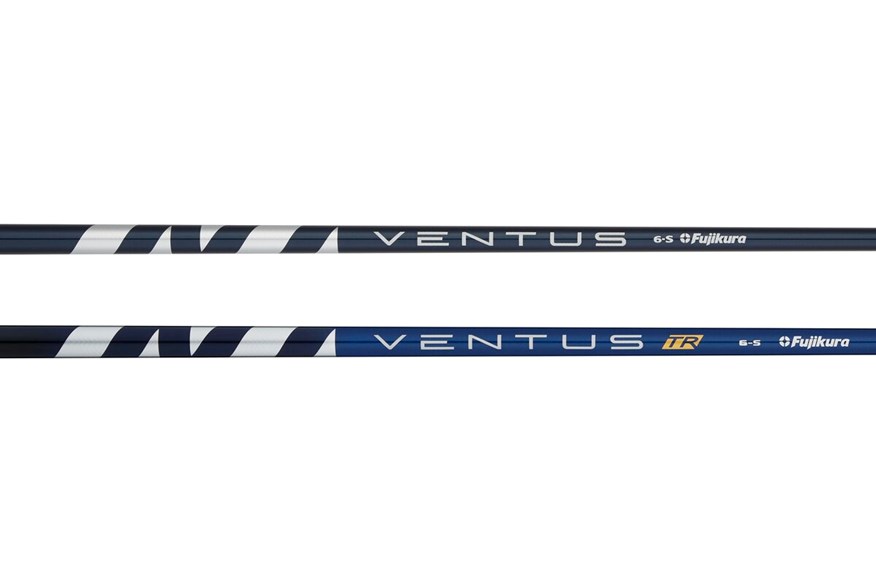
Fujikura Ventus Blue
RRP: $399
Weight: 58 – 94.5g | Torque: 4.0 – 2.9° | Performance: Mid Launch with Low spin
Fujikura Ventus Blue TR
RRP: $399
Weight: 56 – 90g | Torque: 3.7 – 2.6° | Performance: Mid Launch with Low Spin
Today’s Golfer verdict: The Blue is the shaft that put Ventus on the map. In 2019 it was one of the best-selling shafts available and its success even caught the company a little off guard. Ventus Blue introduced golfers to the brand’s ultra-stiff tip VeloCore profile, a key feature in why the Ventus is played by so many of the world’s top players.
From our experience, we’d advise thinking very seriously before looking any further down the Ventus line-up than the Blue. This model is a great set-up for lots of serious club golfers who swing drivers at reasonable speeds and is also the shaft of choice for TG Test pro Neil Wain.
Expect shots to launch on a mid-flight window, where the Blue TR generates a slightly more speed dependent mid to low trajectory, with extra stability in the mid and grip sections. A decent choice for rapid transition players, who don’t specifically want to lower ball flight.
Fujikura Ventus Black and Black TR shafts
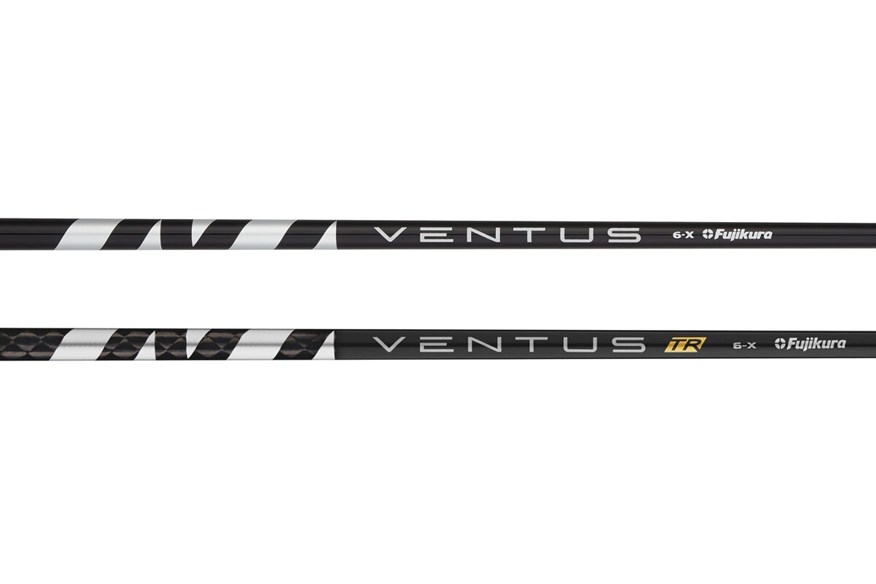
Fujikura Ventus Black
RRP: $399
Weight: 58 – 106g | Torque: 3.3 – 2.8° | Performance: Low Launch with Low Spin
Fujikura Ventus TR Black
RRP: $399
Weight: 59 – 89g | Torque: 3.5 – 2.6° | Performance: Low Launch with Low Spin
Today’s Golfer verdict: Rory McIlroy and Scottie Scheffler regularly play the Ventus black, which should tell you loads about who it’s for. Expect the Black to be a demanding offering that requires plenty of speed to launch successfully, with the ultra-low launching Ventus Black TR requiring even more. A good option for the most aggressive swings in golf.
This wasn’t the best fitting shaft for our test pro, who found he needed to ‘step on’ every drive, so ultimatley recorded his highest dispersion. If dispersion really is your top priority from a new driver shaft then the two Ventus TR models (Red TR and Blue TR) best suited to our test pro also gave improved dispersion numbers (26.1% Red TR and 20.1% Blue TR), despite him preferring the feel of the standard Red and Blue models.
READ NEXT
– Best TaylorMade drivers
– Best Callaway drivers
– Is your driver shaft too long?
Want to get the most from Today’s Golfer? Sign up for TG Membership!
-
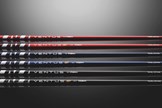 The family of six Fujikura Ventus driver shafts
The family of six Fujikura Ventus driver shafts
-
 The Fujikura Air Speeder shaft
The Fujikura Air Speeder shaft
-
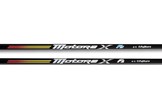 The Fujikura Motore X F1 and F3 shafts
The Fujikura Motore X F1 and F3 shafts
-
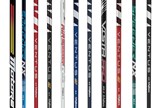 An image to show all the shafts in the Fujikura line-up
An image to show all the shafts in the Fujikura line-up
-
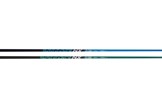 The Fujikura Speeder NX Blue and Green shafts
The Fujikura Speeder NX Blue and Green shafts
-
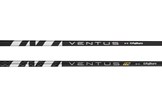 An image to show the differences between the Fujikura Ventus and Ventus TR Black driver shafts
An image to show the differences between the Fujikura Ventus and Ventus TR Black driver shafts
-
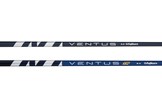 An image to show the differences between the Fujikura Ventus and Ventus TR Blue driver shafts
An image to show the differences between the Fujikura Ventus and Ventus TR Blue driver shafts
-
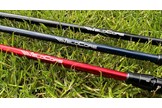 An image to show the VeloCore logo on the tip of Fujikura Ventus driver shafts
An image to show the VeloCore logo on the tip of Fujikura Ventus driver shafts
-
 A data chart to show how the Fujikura Ventus shaft family differ
A data chart to show how the Fujikura Ventus shaft family differ
-
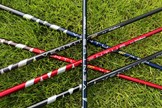 Getting the right shaft is a key part of custom fitting
Getting the right shaft is a key part of custom fitting
-
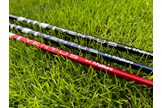 The Fujikura Ventus Red, Blue and Black driver shafts sat on grass
The Fujikura Ventus Red, Blue and Black driver shafts sat on grass
-
 A graphic to show which of the worlds best golfers use and win with Fujikura Ventus driver shafts
A graphic to show which of the worlds best golfers use and win with Fujikura Ventus driver shafts
-
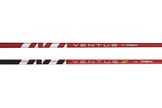 An image to show teh difference between teh Fujikura Ventus and Ventus TR Red driver shafts
An image to show teh difference between teh Fujikura Ventus and Ventus TR Red driver shafts
-
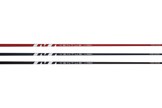 An image of the Red, Blue and Black Fujikura Ventus Shafts
An image of the Red, Blue and Black Fujikura Ventus Shafts
-
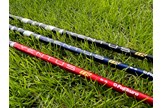 The Fujikura Ventus TR Red, Blue and Black driver shafts sat on grass
The Fujikura Ventus TR Red, Blue and Black driver shafts sat on grass
-
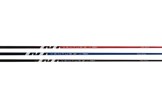 The Fujikura Red, Blaue and Black Ventus TR shafts
The Fujikura Red, Blaue and Black Ventus TR shafts
-
 The Fujikura Vista Pro shaft
The Fujikura Vista Pro shaft